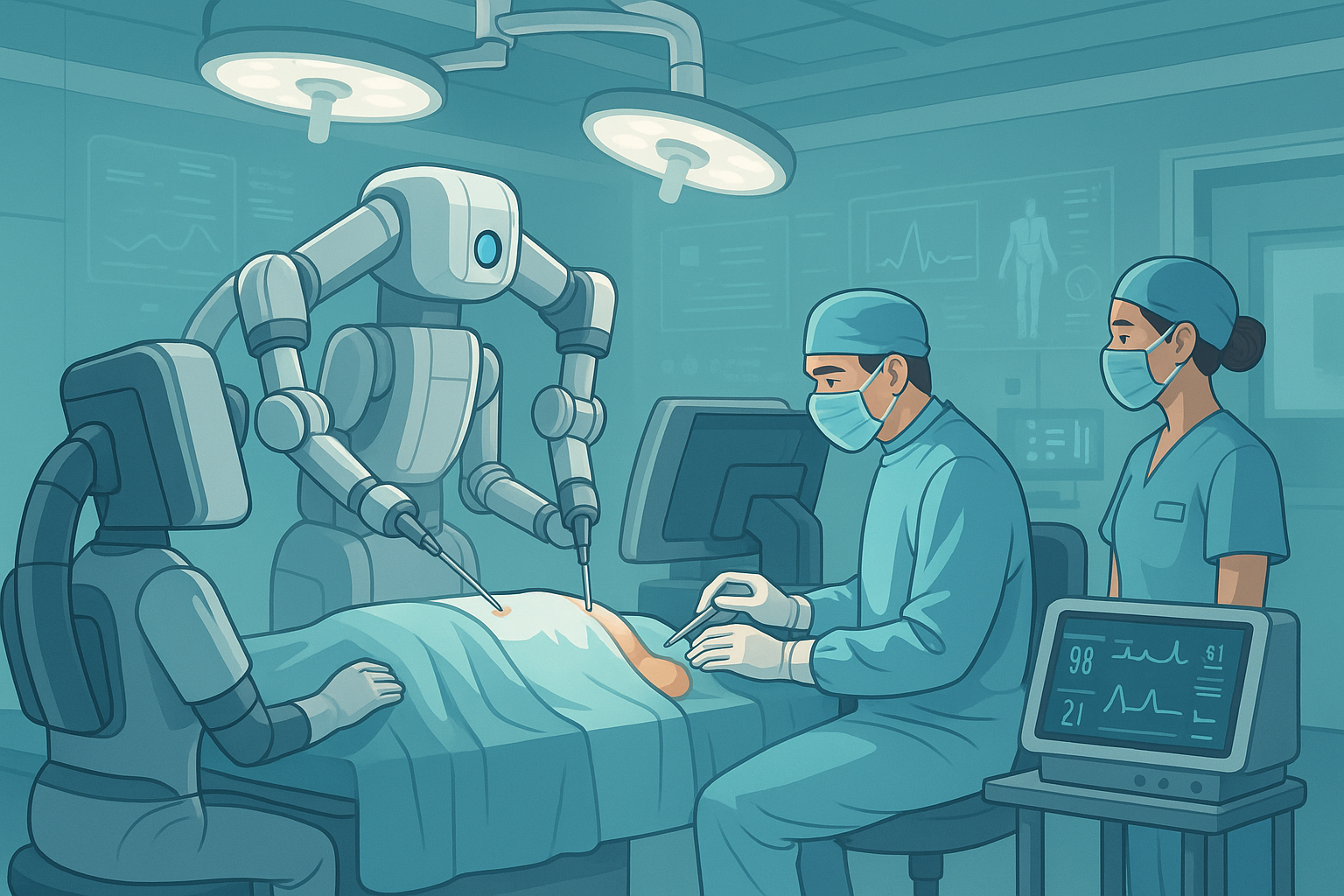Technology has an impact on how doctors treat patients. A major shift is the incorporation of robots in healthcare and surgery. These sophisticated machines help doctors work quicker more , and with greater precision. Let’s dive into how robotics is causing a revolution in the medical field.
What Is Medical Robotics?
Medical robotics refers to the use of robots to aid in healthcare. These robots can perform various tasks:
- Assist doctors during operations
- Transport medicines and supplies in hospitals
- Help patients with physical therapy
- Keep an eye on patients from afar
These machines don’t take the place of doctors—they enable them to do their job more and .
How Robots Are Used in Surgery
Robotic surgery stands out as one of the most thrilling applications of robots in medicine. In this approach:
- A robot performs the surgery with tiny tools, while the surgeon has control over it.
- The robot’s arms move with great precision surpassing human hands.
- Surgeons can see everything thanks to a camera that provides a 3D view inside the body.
Benefits of Robotic Surgery:
- Smaller incisions (invasive)
- Reduced pain and blood loss
- Quicker recovery and shorter hospital stays
- High accuracy lowering human error
Types of Healthcare Robots
Hospitals use several common types of robots:
🤖 1. Surgical Robots
Example: da Vinci Surgical System This system has applications in heart surgery, urology, gynecology, and other areas.
🤖 2. Rehabilitation Robots
These robots assist patients in relearning how to walk or move after they’ve suffered an injury or stroke.
🤖 3. Hospital Service Robots
These machines deliver medicines, meals, and equipment in hospitals, which helps to cut down on staff workload.
🤖 4. Telepresence Robots
These devices allow doctors to communicate with patients from remote locations using cameras and screens.
🤖 5. Disinfection Robots
These robots clean rooms and eliminate germs using UV light or disinfectant spray (they’ve proven useful during the COVID-19 pandemic).
Real-Life Examples
- Apollo Hospitals (India) employs robotic surgery to treat cancer and perform heart operations.
- Mayo Clinic (USA) uses robotic helpers to boost hospital safety.
- ReWalk Robotics creates wearable robotic outfits for individuals with spinal cord injuries.
Challenges and Limitations
Although medical robotics has strength, it still faces some hurdles:
- Machines and training come with a hefty price tag
- Doctors need special skills to run these machines
- Glitches or mistakes can occur (though not often)
As tech gets better, these obstacles are shrinking.
Future of Robotics in Healthcare
Medical robotics has a promising future. We might soon witness:
- Robots with AI that can pick up knowledge from operations
- Tiny robots that operate within the human body
- Hospitals run almost by machines with very few human workers
